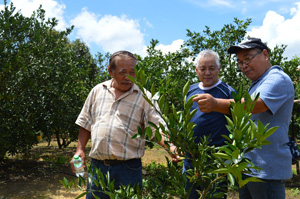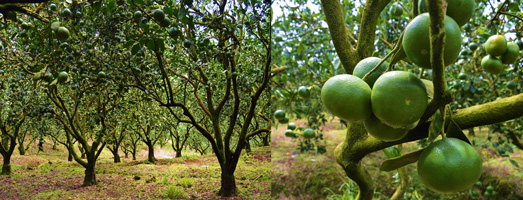 In the Philippines, the domestic supply of citrus is insufficient to meet local demand. This is brought about by high incidence of pest and diseases, poor orchard management, and low adoption of improved management practices, among many other factors. Meanwhile, the shortage is being filled with imports from China which outcompete—both cost-wise and quality-wise—the locally produced fruits.
In the Philippines, the domestic supply of citrus is insufficient to meet local demand. This is brought about by high incidence of pest and diseases, poor orchard management, and low adoption of improved management practices, among many other factors. Meanwhile, the shortage is being filled with imports from China which outcompete—both cost-wise and quality-wise—the locally produced fruits.
To address this concern, researchers from the fields of agronomy, plant breeding, plant pathology, entomology, and economics at the Nueva Vizcaya State University (NVSU) joined together for the three-year program, “Citrus Resources Research for Development in Cagayan Valley (CRR4DCV).”
The program aims to offer strategic S&T interventions in citrus production. It is comprised of projects on value chain analysis, gene bank, and database profiling of citrus genetic resources; establishment of a production system for quality planting materials; and development of pest and disease management systems.
Funded by the Philippine Council for Agriculture, Aquatic and Natural Resources Research and Development of the Department of Science and Technology (DOST-PCAARRD), the program is expected to help the local citrus industry attain a 233% increase in yield (from 4.5 t/ha to 15 t/ha) and a 60% reduction in postharvest losses (from 25% to 10%) by 2019. The targets are part of the Citrus Industry Strategic S&T Program (ISP) of DOST-PCAARRD, which outlines the Council’s S&T priorities, initiatives, and plans on citrus.
On August 3–4, 2017, DOST-PCAARRD along with external technical experts, conducted the Semi-Annual Program Review and Field Monitoring Visit at NVSU to determine the progress of program implementation.
 Nine months after its inception, the program has accomplished the following:
Nine months after its inception, the program has accomplished the following:
• Produced an initial map of market channels and pricing for pummelo in Nueva Vizcaya and calamansi in Cagayan after surveying growers and traders;
• Collected seeds and grafted trees of 38 citrus accessions and morphologically characterized themg for growth, leaf, fruit, and seeds based on a standard descriptor;
• Produced 2,817 budded and 6,171 rootstock seedlings in the NVSU nursery;
• Indexed 151 citrus mother trees from NVSU and 11 from private orchards for citrus tristeza virus (CTV) and huanglongbing (HLB) or citrus greening disease;
• Conducted initial geo-tagging of well-managed orchards in Nueva Vizcaya; and
• Prepared disease incidence and severity data from sample trees in the region, among other accomplishments.
By the end of 2017, the team is expected to produce value chain maps for calamansi, orange, and pummelo in Cagayan Valley; characterize 15 species for the database system of the genebank study; improve NVSU and Municipal Agriculture Office (MAGRO) citrus nurseries producing 10,000 and 2,000 budded seedlings, respectively; establish new 1-ha orchard with planting materials from NVSU; and generate data on the description of local citrus pests and diseases.
Each milestone is an important step towards the team’s long-term vision of elevating Cagayan Valley as the “Citrus Capital of the Philippines.”
